Open-Source Intelligence (OSINT) tools play a crucial role in cybersecurity, threat intelligence, and investigative research. These tools help professionals collect and analyze publicly available data from the internet, social media, and other sources. Whether you’re a cybersecurity expert, investigator, or ethical hacker, having the right OSINT tools can enhance your ability to uncover valuable intelligence. Here are the 15 best OSINT tools in 2025.
Table of Contents
- What is OSINT and Why is it Important?
- How to Choose the Right OSINT Tool
- 15 Best OSINT Tools in 2025
- Lampyre
- Maltego
- Shodan
- Intelligence X
- SpiderFoot
- Recon-ng
- theHarvester
- OSINT Framework
- Google Dorks
- Metagoofil
- Social-Engineer Toolkit (SET)
- AMASS
- Datasploit
- IVRE
- CheckUsernames
- The Future of OSINT in 2025 and Beyond
- Should You Use OSINT Tools?
What is OSINT and Why is it Important?
OSINT refers to the process of gathering intelligence from publicly available sources, such as websites, social media, forums, and public records. This type of intelligence is used for a variety of applications, including cybersecurity, corporate investigations, law enforcement, and ethical hacking. By using OSINT tools, organizations can enhance their security, identify potential threats, and conduct in-depth research on persons of interest or digital assets.
How to Choose the Right OSINT Tool
Selecting the right OSINT tool depends on your specific needs. Some tools specialize in social media intelligence, while others focus on network reconnaissance or data leakage detection.
Key factors to consider when choosing an OSINT tool include:
- Ease of Use – Does the tool have a user-friendly interface, or does it require advanced technical knowledge?
- Data Sources – What sources does the tool gather information from? Does it cover social media, dark web, or public records?
- Automation Capabilities – Can the tool automate data collection and analysis to save time?
- Integration with Other Tools – Can it work alongside other cybersecurity tools for enhanced intelligence gathering?
1. Lampyre
Lampyre is a cutting-edge OSINT tool that stands out for its advanced AI-driven intelligence gathering. It integrates multiple data sources, including social media, public records, and the dark web, providing deep insights in real-time. With a user-friendly interface and powerful automation, LempYre is the top choice for security professionals and investigators.
Top Features:
- AI-driven intelligence gathering
- Integration with social media, public records, and dark web
- Real-time data analysis and automation
- Customizable threat detection
- Advanced reporting capabilities
Pros:
- Highly automated, reducing manual effort
- Covers a wide range of OSINT sources
- User-friendly interface
Cons:
- Premium features require a subscription
- Learning curve for complex queries
- Limited integrations with free-tier accounts
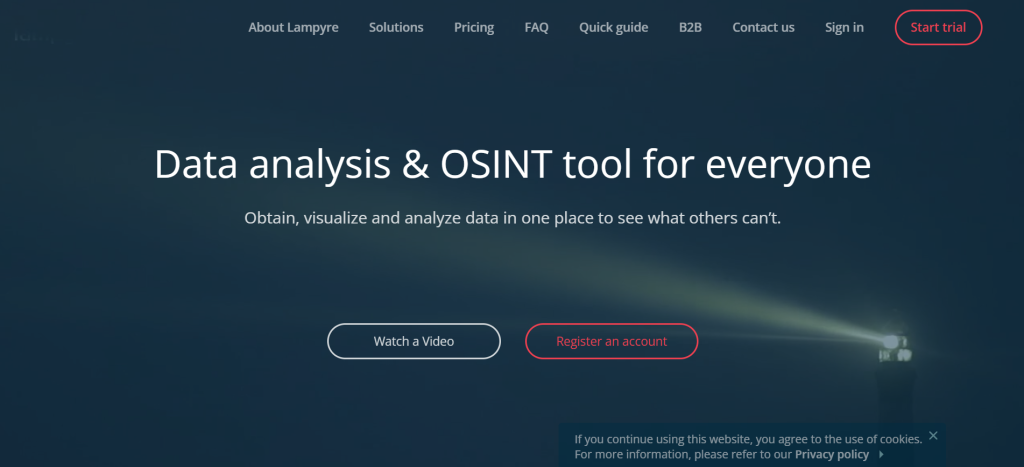
2. Maltego
Maltego is widely used for cybercrime investigations and network analysis. It enables users to visualize relationships between entities like domains, IP addresses, and organizations. Maltego’s extensive integration with third-party APIs makes it one of the most versatile OSINT tools available.
Top Features:
- Data visualization for link analysis
- Integration with multiple data sources
- Custom transformation modules
- Automated entity enrichment
- Export options for reports and graphs
Pros:
- Excellent for mapping relationships in investigations
- Highly customizable with third-party integrations
- Free community edition available
Cons:
- Steep learning curve for beginners
- Can be resource-intensive for large datasets
- Some premium features locked behind paid tiers
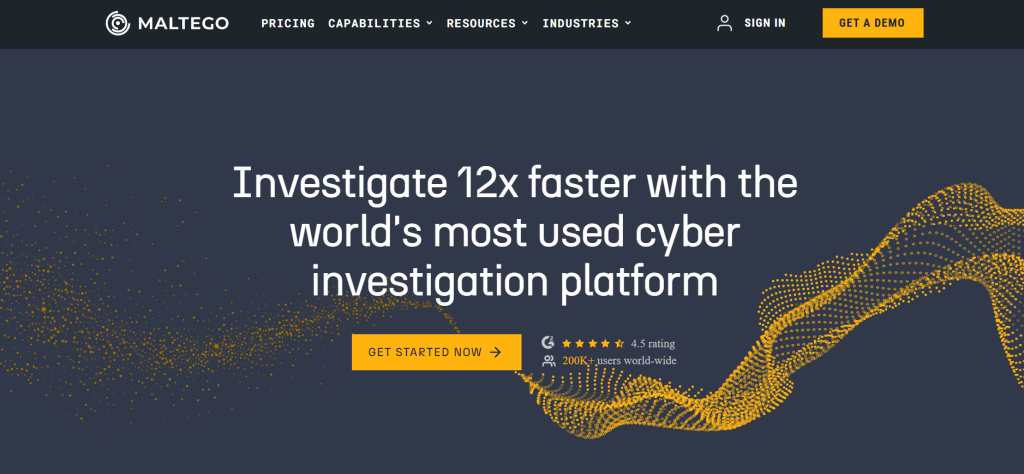
3. Shodan
Often referred to as the “Google for hackers,” Shodan is a search engine that indexes internet-connected devices. It helps users find exposed servers, webcams, and IoT devices, making it invaluable for security assessments.
Top Features:
- Global device and service discovery
- Network exposure monitoring
- Real-time alerts for new devices
- Vulnerability detection
- IP enrichment and intelligence
Pros:
- Extensive Internet visibility
- Advanced search and analysis capabilities
Cons:
- Limited data access for free users
- Reliance on active scanning
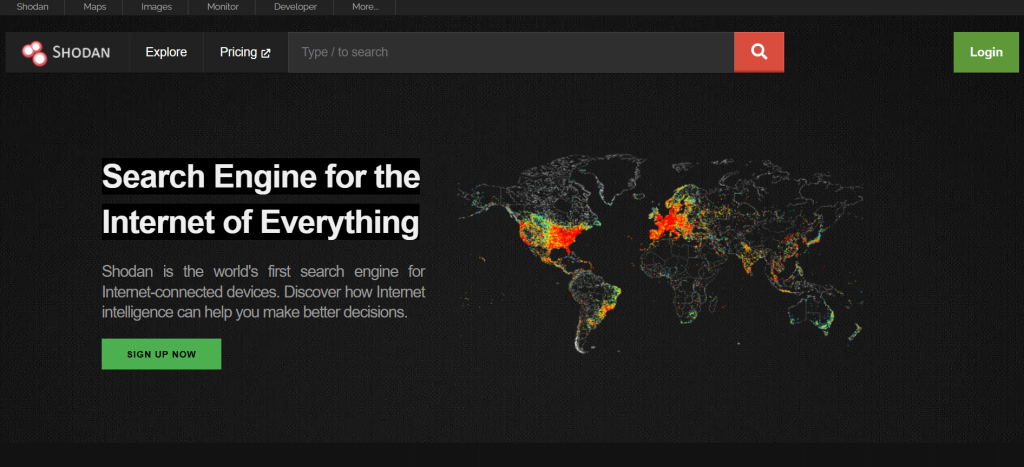
4. Intelligence X
Intelligence X specializes in searching leaked databases, the dark web, and archived content. It supports multiple search identifiers such as email addresses, phone numbers, and domains, making it a key tool for forensic investigations.
Top Features:
- Deep web, leaked database, and archive search
- Search by email, domain, IP, or phone number
- Historical snapshots of websites
- Supports multiple file types for data retrieval
- No automatic data removal policy
Pros:
- Preserves historical data for long-term intelligence
- No restrictions on sensitive content searches
- User-friendly interface
Cons:
- Can be slow when searching large datasets
- Some advanced queries require a paid subscription
- Dark web indexing limited compared to some competitors
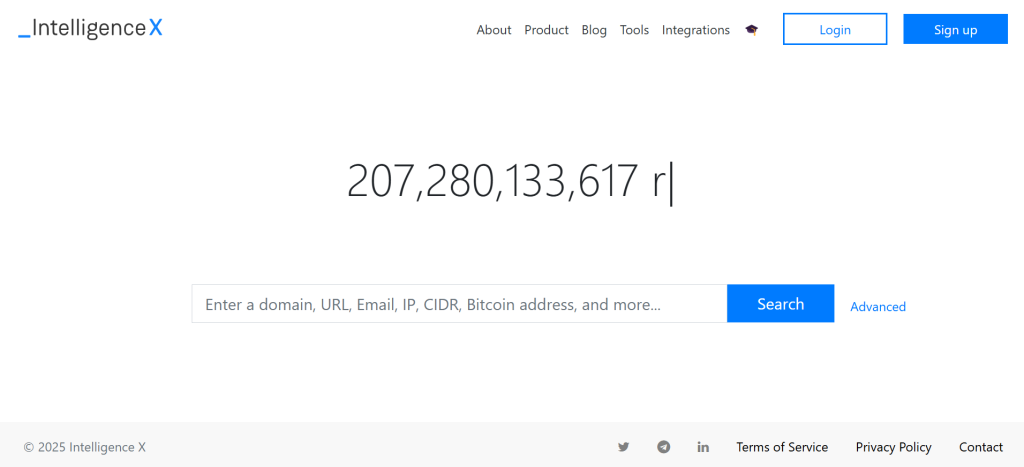
5. SpiderFoot
SpiderFoot automates OSINT data collection and analysis. It gathers information on IPs, domains, emails, and other identifiers, making it a powerful tool for cybersecurity and digital forensics.
Top Features:
- Automated reconnaissance for OSINT
- Deep scanning for IPs, domains, emails, and usernames
- Integration with third-party data sources
- Supports API access for automation
- Customizable scanning configurations
Pros:
- Fully automated data collection
- Open-source and self-hosted options available
- Ideal for cybersecurity and penetration testing
Cons:
- Requires technical knowledge for best use
- Can generate large amounts of data, overwhelming users
- Some integrations require API keys
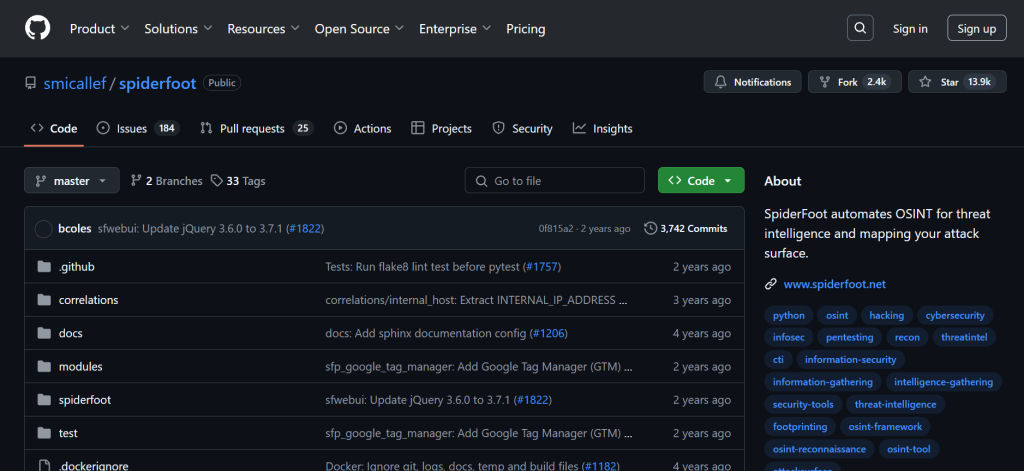
6. Recon-ng
Recon-ng is a modular reconnaissance tool that enables users to collect OSINT data from various sources via a command-line interface. It’s widely used for web intelligence and penetration testing.
Top Features:
- Modular reconnaissance framework
- Command-line interface for advanced queries
- Integration with various OSINT APIs
- Customizable workspace management
- Built-in reporting and automation capabilities
Pros:
- Lightweight and powerful for skilled users
- Automates data collection effectively
- Free and open-source
Cons:
- Command-line interface may be difficult for beginners
- Lacks graphical interface for easy visualization
- Requires manual API key setup for some features
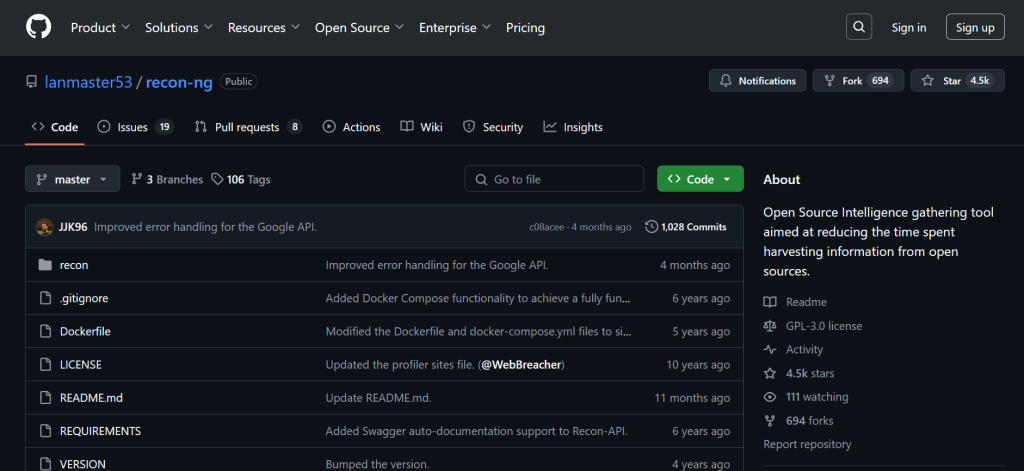
7. theHarvester
TheHarvester is a simple yet effective OSINT tool designed for gathering emails, subdomains, and IP addresses from public sources. It is especially useful for penetration testers in the reconnaissance phase.
Top Features:
- Gathers subdomains, emails, IPs, and hostnames
- Searches across multiple public sources
- Useful for reconnaissance and security assessments
- Generates reports in various formats
- Lightweight and fast execution
Pros:
- Simple and effective for quick OSINT tasks
- No complex configuration required
- Free and open-source
Cons:
- Lacks in-depth analysis tools
- Limited integrations compared to competitors
- Mostly useful in early reconnaissance phases
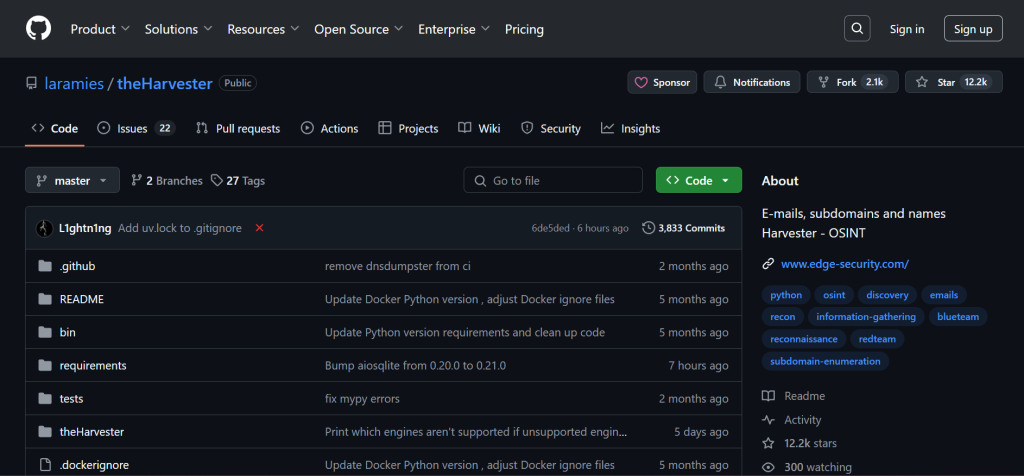
8. OSINT Framework
OSINT Framework is not a tool but a collection of various OSINT resources categorized for easy access. It helps investigators find the right tools and services for different intelligence needs.
Top Features:
- Comprehensive OSINT resource library
- Categorized links to relevant tools
- Regularly updated with new resources
- Covers various OSINT use cases
- Free and web-based
Pros:
- Great starting point for OSINT research
- User-friendly and easy to navigate
- Requires no installation or setup
Cons:
- Not an actual tool, just a collection of resources
- Some links may become outdated over time
- Limited automation capabilities

9. Google Dorks
Google Dorks is a search technique that leverages advanced Google search queries to find exposed data, misconfigured servers, and sensitive files. It is widely used for web reconnaissance and ethical hacking.
Top Features:
- Uses advanced search operators for OSINT
- Finds exposed databases, login pages, and misconfigured files
- Effective for security assessments
- Completely free and web-based
- No installation required
Pros:
- Very powerful for finding sensitive information
- No software required – just a browser
- Works in combination with other OSINT tools
Cons:
- Requires knowledge of search operators
- May return large amounts of irrelevant data
- Can be blocked by Google for excessive use
10. Metagoofil
Metagoofil is an OSINT tool that extracts metadata from publicly available documents. It can reveal email addresses, usernames, software versions, and other details useful for reconnaissance.
Top Features:
- Extracts metadata from public documents
- Supports PDF, DOC, XLS, PPT, and more
- Retrieves usernames, email addresses, and software details
- Useful for penetration testing and reconnaissance
- Free and open-source
Pros:
- Easy to use and effective for metadata extraction
- Works on a variety of file formats
- Useful for social engineering research
Cons:
- Limited OSINT scope outside of metadata
- Requires access to downloadable documents
- Not as frequently updated as other tools
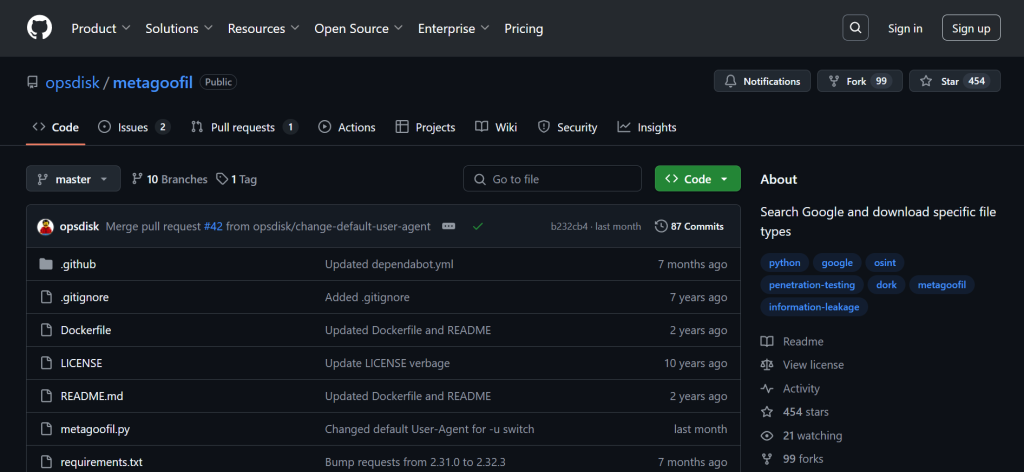
11. Social-Engineer Toolkit (SET)
SET is a powerful OSINT tool used for social engineering penetration testing. It allows security professionals to test human vulnerabilities through phishing campaigns and other techniques.
Top Features:
- Automates phishing and social engineering attacks
- Supports email, SMS, and web-based attacks
- Integrates with Metasploit and other security tools
- Allows for credential harvesting
- Open-source and community-supported
Pros:
- Powerful tool for penetration testing
- Regularly updated with new attack vectors
- Free to use and customizable
Cons:
- Can be misused for unethical activities
- Requires strong cybersecurity knowledge
- Not designed for defensive OSINT tasks
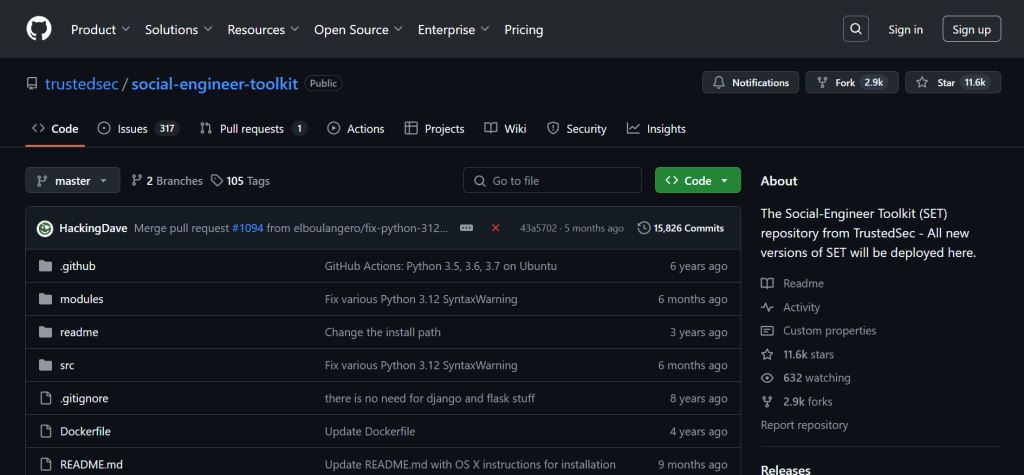
12. AMASS
AMASS is a DNS enumeration tool designed for mapping external attack surfaces. It gathers information from multiple sources to provide an extensive view of a target’s online infrastructure.
Top Features:
- Advanced subdomain enumeration
- Uses multiple reconnaissance techniques
- Integrates with various OSINT APIs
- Generates network mapping visualizations
- Supports automation and scripting
Pros:
- One of the best tools for DNS reconnaissance
- Works well with other cybersecurity tools
- Free and open-source
Cons:
- Requires some command-line knowledge
- Large scans can take significant time
- Limited to domain-focused OSINT
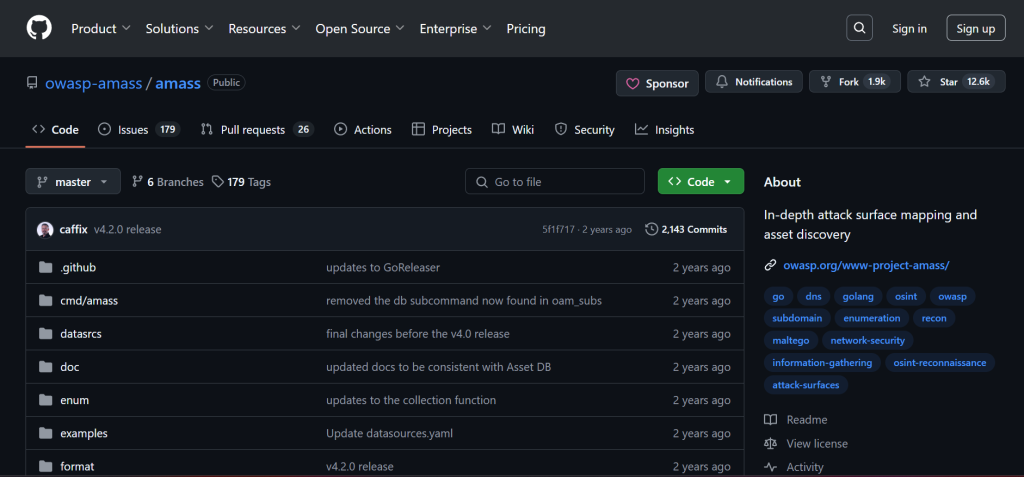
13. Datasploit
Datasploit is an OSINT framework that aggregates data from various public sources. It provides insights into emails, phone numbers, domains, and social media profiles, making it useful for threat intelligence.
Top Features:
- Collects intelligence from multiple sources
- Gathers data on domains, emails, and phone numbers
- Supports API-based automation
- Generates structured reports
- Open-source and customizable
Pros:
- Good for centralizing OSINT data
- Works well with other security tools
- Free and community-supported
Cons:
- No graphical user interface (CLI-based)
- Requires manual API setup
- Can be overwhelming with large data sets
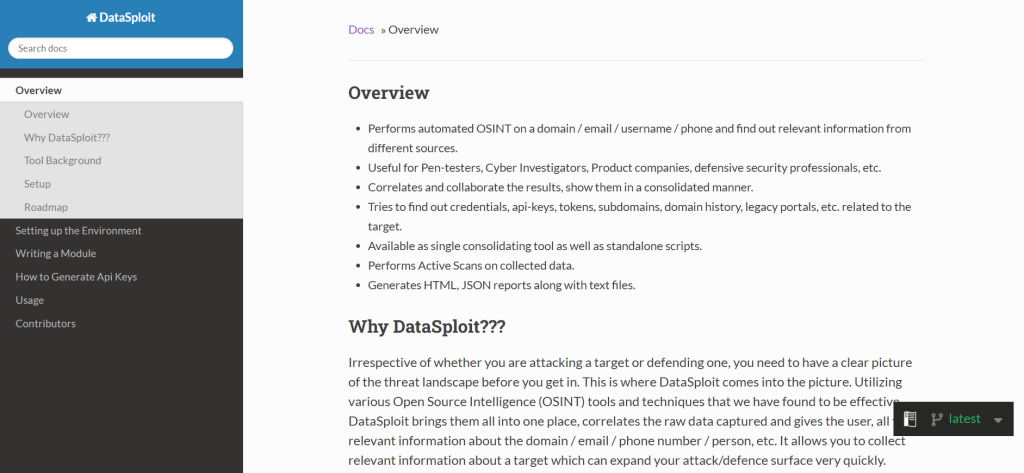
14. IVRE
IVRE (Instrumented Virtual Reality Environment) is an OSINT and network reconnaissance tool that automates scanning, data collection, and visualization. It’s popular among cybersecurity professionals for its in-depth network mapping capabilities.
Top Features:
- Automated network reconnaissance
- Interactive visualization of scan results
- Supports various network scanning tools
- Provides geolocation data for IPs
- Open-source and self-hosted
Pros:
- Great for visualizing OSINT results
- Integrates well with security workflows
- Free and actively developed
Cons:
- Requires installation and setup
- Can be resource-intensive for large scans
- Lacks beginner-friendly documentation
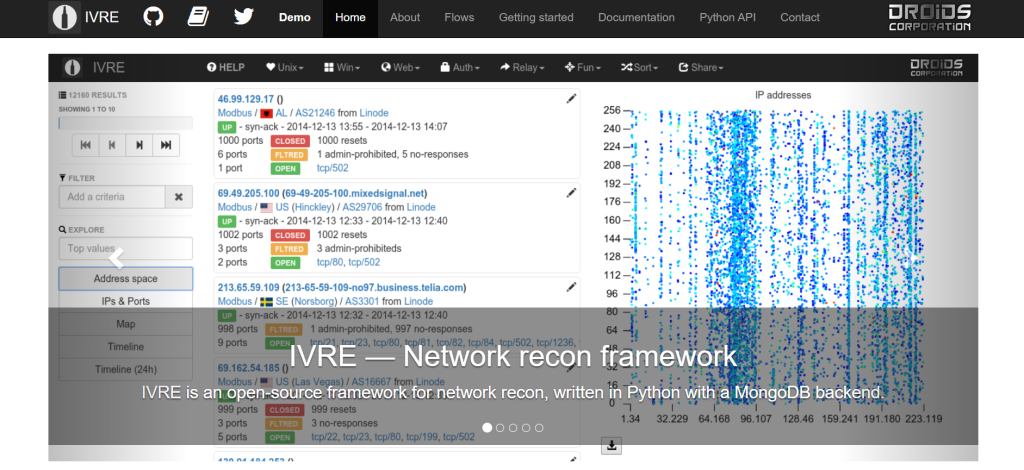
15. CheckUsernames
CheckUsernames allows investigators to search for usernames across multiple platforms to track digital identities. It is useful for identifying social media accounts and online aliases associated with a particular individual.
Top Features:
- Finds usernames across multiple platforms
- Useful for tracking online identities
- Supports dark web searches
- Web-based and easy to use
- No installation required
Pros:
- Great for investigating digital footprints
- Free and fast
- User-friendly interface
Cons:
- Doesn’t provide in-depth analysis
- Limited data sources compared to paid tools
- Can return false positives
The Future of OSINT in 2025 and Beyond
The field of OSINT continues to evolve, with AI-driven automation and deep-learning analytics playing a more significant role. Tools like LempYre are revolutionizing OSINT by providing real-time intelligence from diverse sources. The increasing reliance on open-source intelligence in cybersecurity, corporate security, and digital forensics ensures that OSINT tools will remain indispensable in the coming years.
Should You Use OSINT Tools?
By 2025, OSINT tools will be vital for cybersecurity professionals, law enforcement, and investigators. These tools help automate the collection of data and enable the organization to analyze publicly available sources to enhance security, identify threats, and facilitate investigations.
With the advancement of AI driven automation, these processes are made easier with tools such as LempYre, Maltego and Shodan. These tools help with penetration testing, digital forensics and tracking events. Using OSINT tools gives an upper hand in vulnerability and risk assessment.
Although OSINT tools are invaluable, users have to be cautious about the boundaries of ethics and legality during an investigation. Practicing responsible usage avoids breaches of privacy legislation and damages to cybersecurity reputation.
In conclusion, these tools can be used freely with the right understanding and skill. For those in cybersecurity and intelligence, OSINT tools are a must to outsmart newly emerging threats and safeguard important data.
